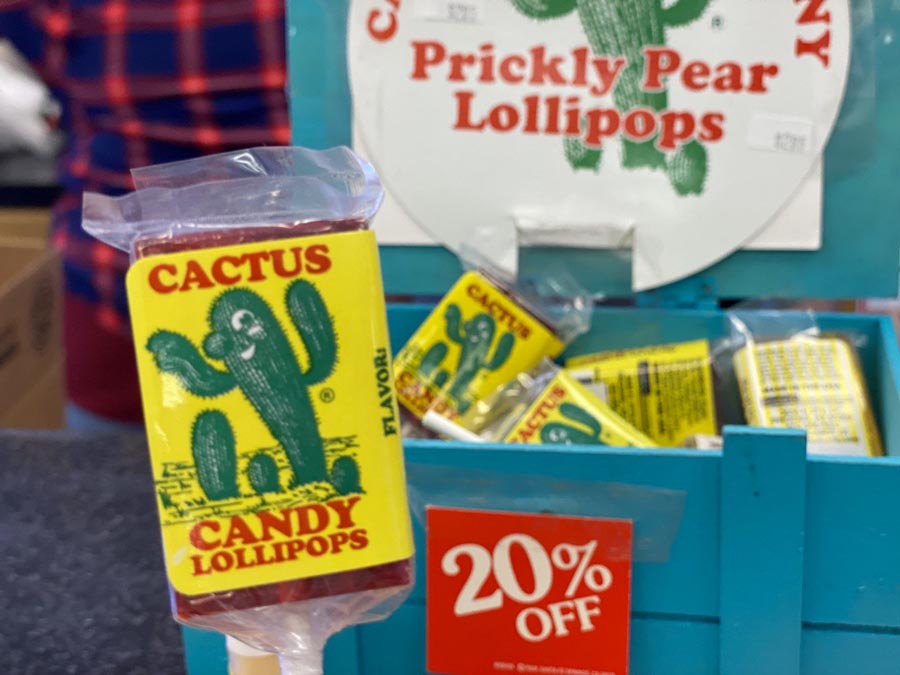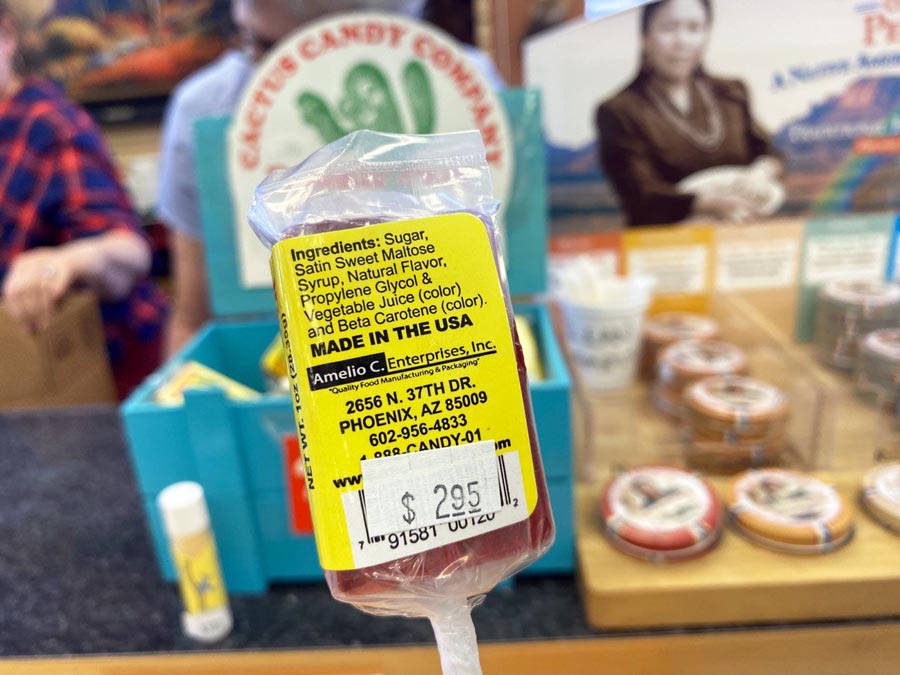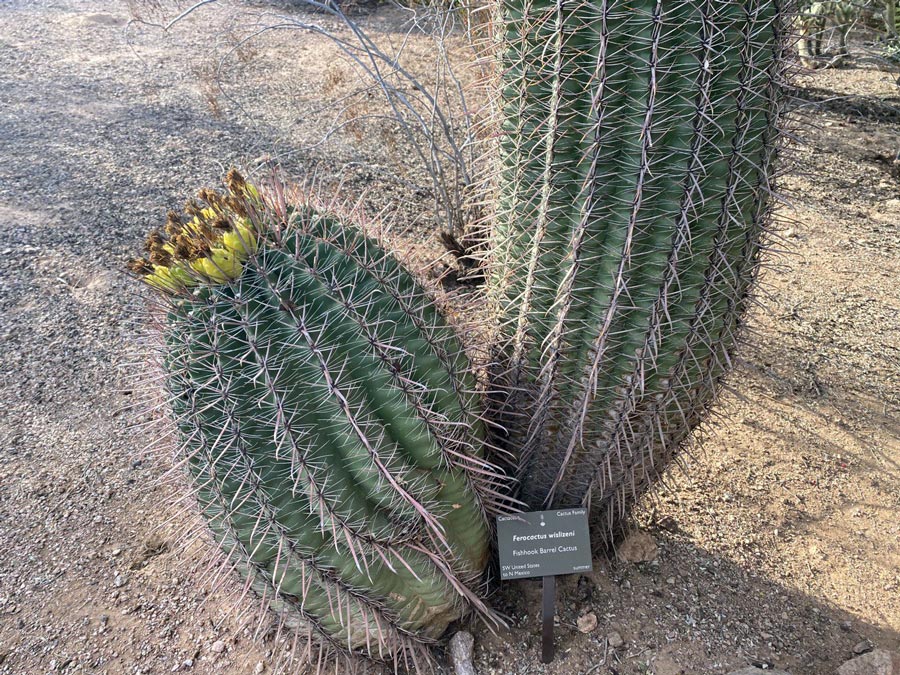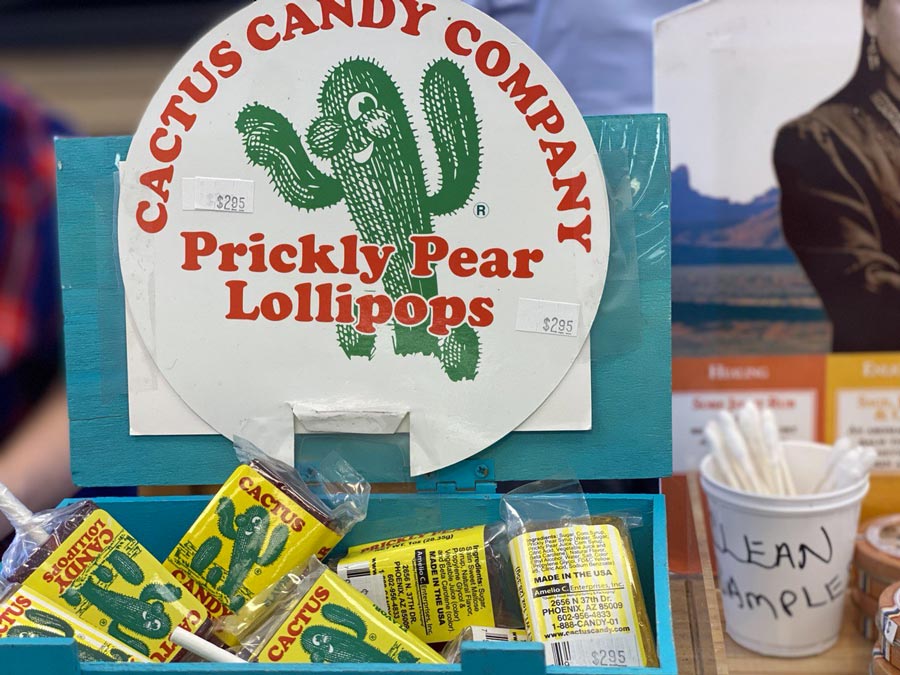A century ago, the desert southwest was a vast cactus forest, teeming with towering saguaro, organ pipe, cholla, prickly pear, and the Native American’s beloved visnaga. Cacti served as a source of food, fishing hooks, and homemade delicacies for the Pima and other tribes.
The candy-making process involved a remarkable amount of labor, cacti, and sugar. In the desert, hired workers would chop down plants ranging from two to five feet tall and weighing between 80 to 100 pounds. They would then remove the spines and transport them to the factory. At the factory, workers would peel, core, and dice the cactus, boiling it until it became soft and then repeatedly boiling it in sugar syrup, increasing the temperature each time. Using a top-secret process, the workers would crystallize the cubes in vats, boil and crystallize them again, and then place them on shelves to harden.

Dominick Donofrio played a pivotal role in transforming the unappealing desert plant into a delicious treat and establishing a successful marketing campaign. Candies from the cactus was marketed as a clean, nutritious option for breakfast, lunch, and dinner. Mail orders soared, and the treat became popular nationwide.
As the demand for cactus candy grew, more factories emerged across Arizona, New Mexico, Texas, and California. Manufacturers continually sought ways to innovate, including canning cactus, adding fruit flavors, and coating the candies in chocolate. The candy found its way onto trains, in restaurants, and hotels, meeting the increasing demand.

However, the overharvesting of cacti began to deplete the desert’s resources. Concerns were raised about the impact on the rare botanical treasure. Legislation was passed to protect desert vegetation, a botanical garden began to appear, such as the Desert Botanical Garden in Phoenix, Arizona. But the threat remained, stolen cacti were smuggled, fields were destroyed, and a Los Angeles candy factory became inundated with freshly cut wisnagas. The Friends of the Desert groups emerged to advocate for protection and change public perception of the desert as an ecological garden.

Following in California’s footsteps, Arizona also implemented protections for its desert plants, including the endangered giant barrel cactus. While some continued to use cacti in production, efforts to protect the species gained momentum. In the early 2010s, federal protection under the Organ Mountains and Peaks Desert Conservation Act was granted, recognizing the value of the barrel cactus as a species worth preserving.
